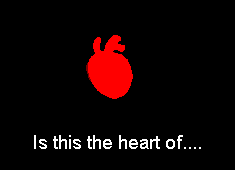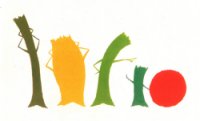 On a recent fall afternoon, the Brooklyn Children’s Museum featured a tremendous special event, “The Heart Knows Better,” which will be repeated on Sunday, Dec. 9th, in relation to its exhibition “Face to Face” on prejudice and discrimination. The museum invited distinguished filmmaker Ken Kimmelman, who is an Aesthetic Realism Consultant, to show three of his short films against racism and to speak about how the knowledge of Aesthetic Realism, founded by the great poet and educator Eli Siegel, enables prejudice to change to kindness. On the program were his Emmy award-winning public service film, The Heart Knows Better, broadcast on television worldwide and shown at every game at Yankee Stadium; and two films he made for the United Nations: Brushstrokes and Asimbonanga.
On a recent fall afternoon, the Brooklyn Children’s Museum featured a tremendous special event, “The Heart Knows Better,” which will be repeated on Sunday, Dec. 9th, in relation to its exhibition “Face to Face” on prejudice and discrimination. The museum invited distinguished filmmaker Ken Kimmelman, who is an Aesthetic Realism Consultant, to show three of his short films against racism and to speak about how the knowledge of Aesthetic Realism, founded by the great poet and educator Eli Siegel, enables prejudice to change to kindness. On the program were his Emmy award-winning public service film, The Heart Knows Better, broadcast on television worldwide and shown at every game at Yankee Stadium; and two films he made for the United Nations: Brushstrokes and Asimbonanga.
Mr. Kimmelman was joined by public school teachers and Aesthetic Realism Associates Lauren Phillips and Barbara McClung, and they addressed two enthusiastic audiences of parents and little ones up to 12 years old in the museum’s amphitheater.
 First they showed The Heart Knows Better, which begins with an animated beating heart and the words: “Is this the heart of . . . . a black person?” The question is repeated, and older children read aloud, “Is this the heart of . . . . a white person? . . . . a Latino person? . . . . an Asian person?” As the warm red heart, framed by a blue glow, gracefully fills the screen we see these words:
First they showed The Heart Knows Better, which begins with an animated beating heart and the words: “Is this the heart of . . . . a black person?” The question is repeated, and older children read aloud, “Is this the heart of . . . . a white person? . . . . a Latino person? . . . . an Asian person?” As the warm red heart, framed by a blue glow, gracefully fills the screen we see these words:
It will be found that black and white man have the same goodnesses, the same temptations, and can be criticized in the same way. The skin may be different, but the aorta is still the same. — Eli Siegel, Founder of Aesthetic Realism.
Young and old responded with exuberant applause, and in the discussions which followed, new, important ideas of Aesthetic Realism were presented:
- Prejudice doesn’t begin with skin color or ethnic background; it begins with how a person sees the world different from oneself. There is a fight in every person — whether you are 3, 10, or 87 — between seeing the world with respect or contempt.
- All prejudice arises from contempt — the hope to be superior by looking down on other people and things. When we see that true importance doesn’t come from building yourself up by making less of the world and people, but from wanting to know and be fair to what’s different from us, prejudice ends.
- Liking the world is the deepest desire of every person; and the way to like the world is by seeing it is made well — it has a structure we can respect and like — a oneness of opposites.
I give some highlights from their exciting, rich presentations.
What Is the World? How Should We See It?
Lauren Phillips asked the children if they knew what the world is. She told them that Mr. Siegel defined the world as “all that which begins where your fingertips end,” and requested that everyone hold out their hands. As the audience did, people’s faces showed wonder when the speakers explained, “Everything that is outside your fingertips is the world. You can touch what you’re sitting on — the seat is the world; the person sitting next to you is the world.” A boy looking surprised, pointed to another boy —”Him?” “Yes, the boy next to you — isn’t he the world?” The child looked doubtful. “He’s not you, is he?” Then his look changed to discovery. And people were seeing that to someone else, you are the world. “There’s ourselves and there’s the whole world,” the speakers said; “Our job is to be fair to what’s not us, and that includes people whose skin looks different from ours and people in other countries.”
To illustrate the fight in people about how to see the world, they took out a big, colorful beach ball. Mr. Kimmelman threw the ball to Ms.Phillips who smugly turned her back on it, and let it bounce away. He threw the ball again, and this time she eagerly caught it. “Did you respect Miss Phillips when she caught the ball, or when she didn’t want to?” they asked. “When she caught it,” answered a boy. “Who wants to catch the ball?” they asked. The response was rousing and unanimous.Applause and cheers greeted each child’s successfully doing so.
Mr. Kimmelman asked, “When do you think a person’s more proud of himself, when he’s having respect for the world or contempt?” A youth in the back row happily called out “Respect!”

The Fight between Contempt and Respect
Everybody, Mr. Kimmelman said, is in a fight between respecting the world, wanting to know and be fair to it, or having contempt. The choice for contempt, he said, is the cause of all prejudice. “You feel like a big shot when you think less of someone, but later you always feel ashamed.” Prejudice they showed, begins in ordinary ways: you can be against certain foods even though you’ve never tasted them. Families can prefer their relatives and think other families are not as important. We can be prejudiced against people who are taller or shorter than we are.We can also look down on someone because they have a rip in their sweater.
“The everyday way we can stick out our tongues and say pooh pooh,” Mr. Kimmelman said, “is what leads to horrors like racism and war.” Each speaker spoke courageously about prejudice in themselves, and how it changes when a person learns to criticize contempt, and to see the feelings of other people as real and as deep as one’s own.

Next they showed Brushstrokes, an animated film set to original jazz music of Major Holley and tap dance rhythms by Jimmy Slyde, which shows vividly that prejudice is contempt for difference. It is about a green brushstroke who thinks he’s better than all other colors and shapes. When he meets them he growls and is mean. He only likes to be with green brushstrokes.
“Did you think the green brushstroke was smart?” the children were asked. “No!” many replied. “Why not?” “Because he didn’t like the other colors,” a child answered. “Was he prejudiced?” “Yes.” “Would the world be beautiful if it only had green brushstrokes?” “No!” was the immediate reply. “It would be boring,” said a girl. “Yes,” said Mr. Kimmelman, “we need the difference of the world to be more ourselves.”
The film ends as the green brushstroke finds his real importance is his relation to all colors and shapes, as he takes his place in a mosaic which we discover is a huge picture of the world.
The Opposites in Ourselves and the World
Every time we see the opposites as one, the speakers explained, we like the world and respect it. For example, Mr. Kimmelman showed that everyone is both hard and soft. He gave an example he saw Mr. Siegel give as he asked everyone to make a fist. “Do you feel something hard? There’s bone there, and anger when you make a fist.” Then he showed how the same hand can softly touch your cheek.
Ms. McClung took a broom leaning against the wall. “It’s got one handle and many fibers on the end — one and many. Think about it,” she said, “if this broom was just one stick, would it be very useful for sweeping things up?” “No,” they replied. “And if it was all fuzzy, wild fibers, would it be easy to hold onto?” “No,” children answered. “So we need both — one and many — to have the broom be useful to us.” A little girl began applauding with delight as she saw the opposites as one in that broom!
The children were learning that you don’t want to have contempt for a world you see as friendly, and you won’t want to be mean to a person if you see they have the opposites in them — hard and soft, same and different — opposites which make up the world and everything in it.

I am so grateful that I began to learn this as a child in Aesthetic Realism classes with Eli Siegel, which I attended with my parents and others. As a girl, without knowing it, I hoped to be important by feeling superior to others and this desire made me unkind both to people I knew — like my younger sister, whose looks and manners were different from mine – and people I didn’t know. I remember with deep regret calling a little boy I didn’t know an ugly name because his skin looked different from mine. In lessons when I was young, I learned that other people had feelings as deep as mine, and that I could have a good time and be more myself by wanting to know and be fair to them. The thrill of learning that is as fresh as ever, and I know this education enables children to make choices they can be proud of all their lives.
The Art of the Film Opposes Contempt and Racism
The last film, Asimbonanga, based on a song by Johnny Clegg and sung by Joan Baez, shows contempt running a whole nation, and juxtaposes images of the deadly racism of apartheid in South Africa with images of courage by many people, including Steve Biko, Gloria Mxenge and Nelson Mandela.
When I asked Julie McCurdy, a student-teacher who came with her nieces, what stood out for her, she said: “I feel different somehow; I feel lifted because I have a better understanding.” Aziza Arnette, an elementary school teacher said: “I was looking for a method of teaching this subject and here it is. This is great! Are they going to do this presentation all over the world?”

Mr. Kimmelman has addressed schools and organizations on Aesthetic Realism as the solution to racism, including at Harvard University sponsored by the Campus Outreach Opportunity League.
I respect Ken Kimmelman, Lauren Phillips and Barbara McClung for their presentation, and the Brooklyn Children’s Museum for hosting it. This exciting, deep event will be repeated Sunday, December 9, at 1:30 and 3pm, at the Brooklyn Children’s Museum, 145 Brooklyn Avenue, (718) 735-4574.
To learn more about Aesthetic Realism, including classes for young people, contact the not-for-profit Aesthetic Realism Foundation, 141 Greene St., NYC 10012, (212) 777-4490; www.AestheticRealism.org. For information about Ken Kimmelman’s films call Imagery Film, Ltd. (212) 243-5579.
Note: Alice Bernstein is an Aesthetic Realism Associate and writer whose articles on Aesthetic Realism as the knowledge that explains the cause and answer to racism, what is really happening in the economy, and the deepest questions about love and the family, appear in many newspapers, including her regular column “Alice Bernstein and Friends” in La Vida News/The Black Voice of Ft. Worth and Arlington, Texas. She is married to photographer David M. Bernstein, and together they study in classes taught by Ellen Reiss, the Aesthetic Realism Chairman of Education.
This article appears in other newspapers, including: New York Beacon, Caribbean Life (NYC), Philadelphia Sunday Sun, Tennessee Tribune (Nashville, Memphis, Knoxville, Chattanooga, Jackson, TN & Huntsville, AL), Chicago Independent Bulletin, La Vida News/The Black Voice (Ft. Worth & Arlington, TX), U.S. African Eye (International)

